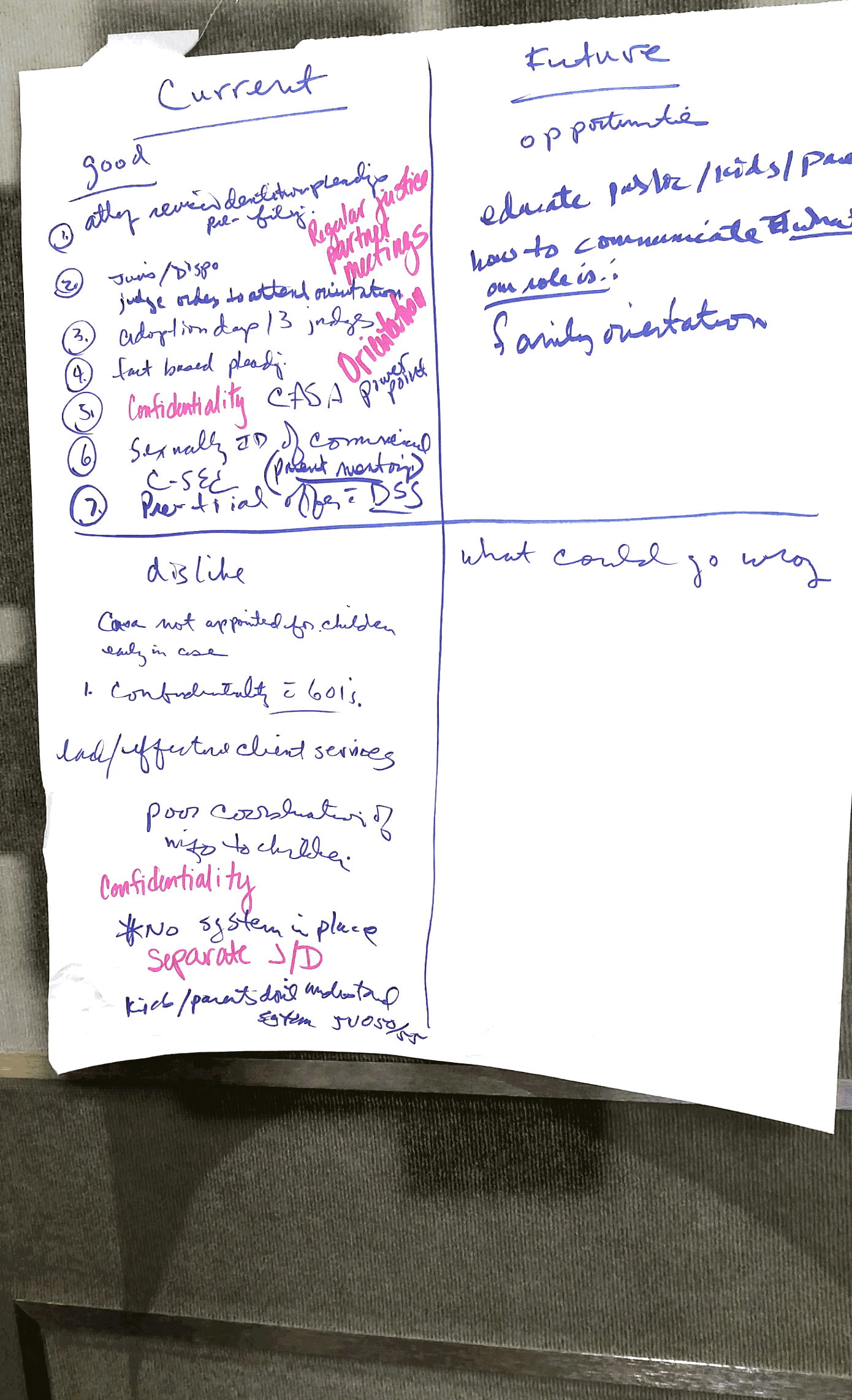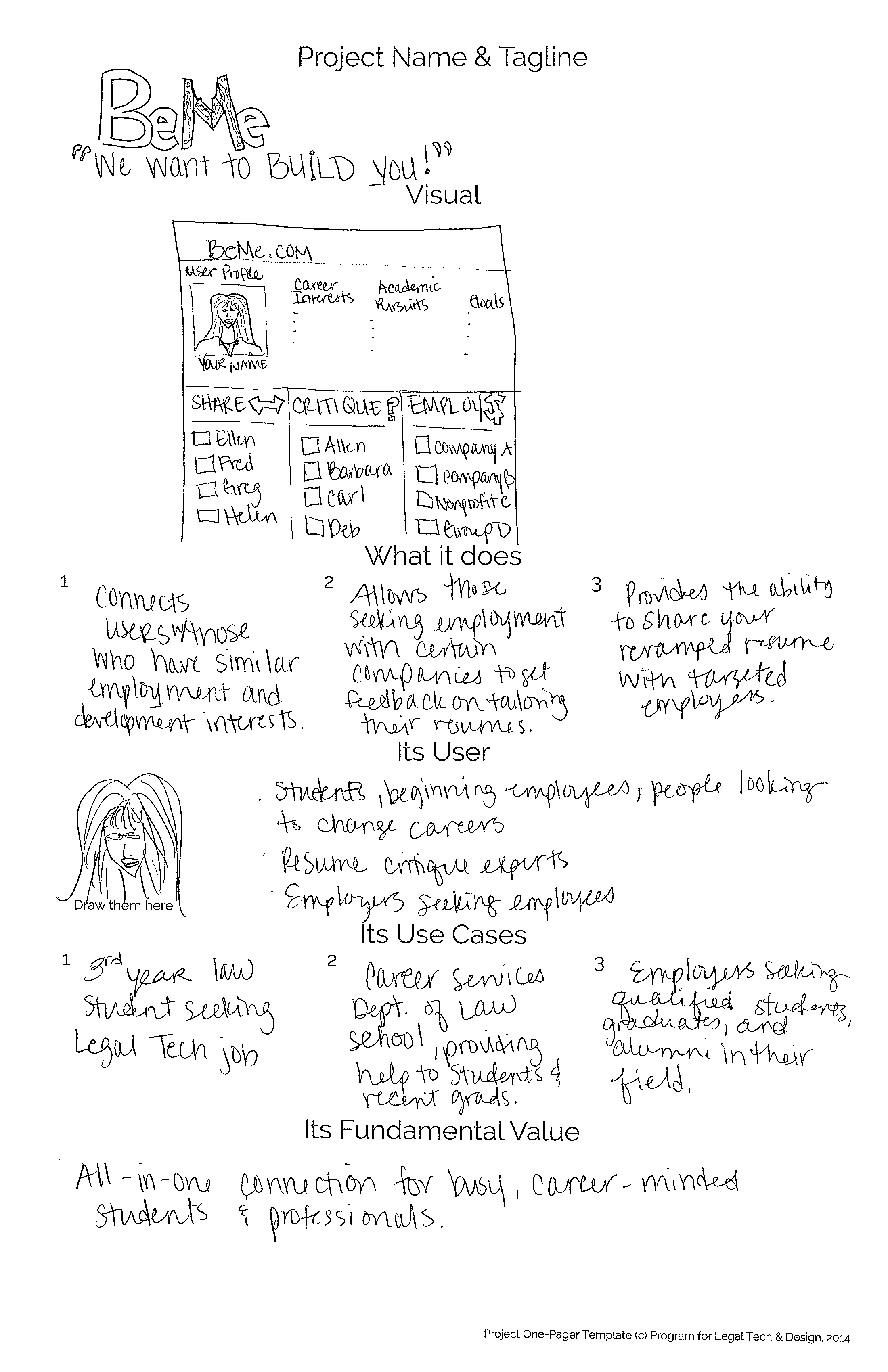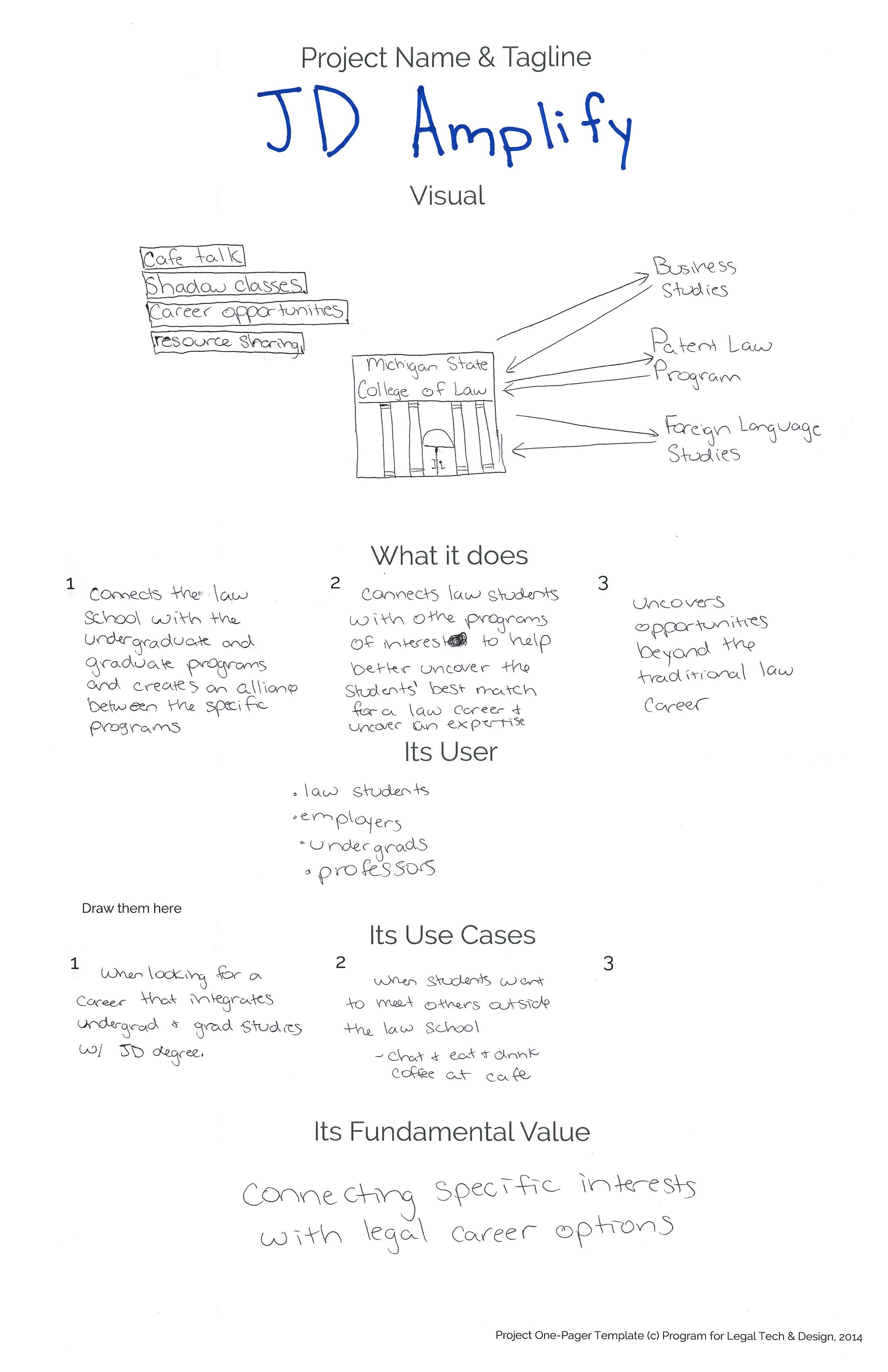On December 2nd, a team of us — Margaret, Alix Devendra, and Jess Hudak — ran a series of user experience workshop at the Beyond the Bench conference sponsored by the Judicial Council of California for all kinds of professionals who work on family law and juvenile justice. The goal was to teach the participants about user centered design, help them form some initial ideas about what they could build for their own clients and coworkers, and to see what part of the process might be possible and useful for them to use at home.
We ran a 3 hour session in the morning, & a one and a half hour session in the afternoon. The challenge question for each group was the same: how can we serve our client communities in more effective, holistic, and coordinated ways?
We introduced the basics of what design is, and how it can be brought into the world of legal services. We formed the participants into teams of 3 to 8 people. They interviewed each other about their workflows, frustrations, and opportunities they see. Then they picked specific target users to focus on, chose a problem to solve for them, and then came up with promising ideas to resolve this person’s problem.
In the end we had some common themes of ideas (like many mentorship programs, remote/tech-enabled services, and client-centered navigation tools) for a variety of different users. Some of the ideas:
- mentorship programs that train people who have already been through the system to then help new people going through it to figure out what’s going on, and make it through in the best way
- map of the different legal, family, government systems that help a person figure out what track they’re on, and which other systems might be relevant to them
- document scan-and-review through mobile phones, that let a person take a phone photo of their legal form (like Proof of Service), send it to an expert (like a law librarian, self help center worker, lawyer, etc) for them to review and correct without the person having to go to the place in person
- ways to allow for professionals to automatically generate reports about what they’re doing and outcomes
- welcome-to-court preparation and navigation tools, that give people quick ways to figure out what system they’re in, who to talk to for their specific problem, and what red flags and advice to be thinking about
- role playing games to help people understand the system from many different stakeholders’ perspectives (what the parents do, what the kids do, what social workers and lawyers do, etc)
- special counselors for Tribal issues
- mental health facilitation center inside the court, to give support and protocols (as well as referrals) to people who may come to court and are also dealing with mental health issues


















